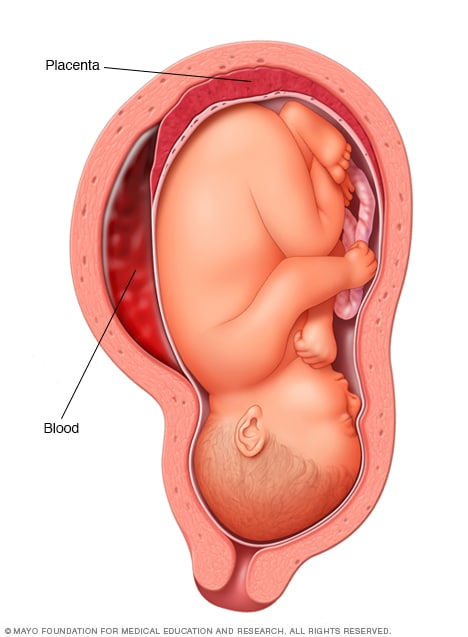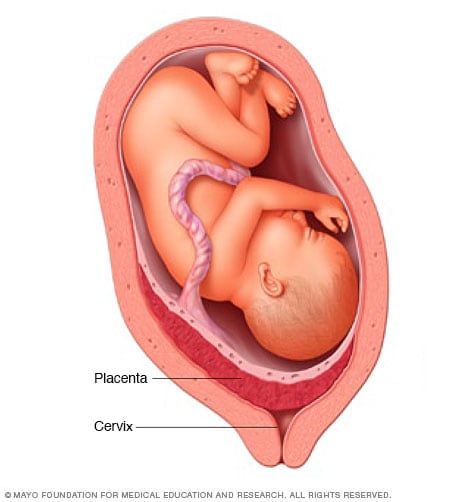Placenta: How it works, what’s normal
8 min readPlacenta: How it operates, what’s normal
The placenta plays a critical job in the course of pregnancy. Uncover out what it does, challenges that may well impact the placenta and how the placenta is sent.
By Mayo Clinic Personnel
If you might be expecting, you may well ponder what the placenta does and what things can impact it. Get the specifics about this important organ that joins the mother and newborn.
What does the placenta do?
The placenta is an organ that develops in your uterus in the course of pregnancy. This framework provides oxygen and nutrients to your expanding newborn and gets rid of squander merchandise from your baby’s blood. The placenta attaches to the wall of your uterus, and your baby’s umbilical wire occurs from it. The organ is usually connected to the top, side, entrance or back of the uterus. In scarce scenarios, the placenta may well attach in the reduced area of the uterus. When this occurs, it is really known as a small-lying placenta (placenta previa).
What impacts placental well being?
Many things can impact the well being of the placenta in the course of pregnancy, with some under your management and some not. For instance:
- Maternal age. Some placental issues are much more frequent in older girls, primarily following age 40.
- A split in your drinking water in advance of labor. Throughout pregnancy, your newborn is surrounded and cushioned by a fluid-stuffed membrane known as the amniotic sac. If the sac leaks or breaks in advance of labor starts, also known as your drinking water breaking, the possibility of sure placental issues improves.
- Large blood tension. Large blood tension can impact your placenta.
- Twin or other various pregnancy. If you might be expecting with much more than a single newborn, you may well be at improved possibility of sure placental issues.
- Blood-clotting ailments. Any ailment that either impairs your blood’s ability to clot or improves its probability of clotting improves the possibility of sure placental issues.
- Preceding uterine surgical procedures. If you’ve got had a past surgical procedures on your uterus, these as a C-part or surgical procedures to get rid of fibroids, you might be at improved possibility of sure placental issues.
- Preceding placental issues. If you’ve got had a placental difficulty in the course of a past pregnancy, you may well have a higher possibility of enduring it all over again.
- Substance use. Specified placental issues are much more frequent in girls who smoke or use cocaine in the course of pregnancy.
- Abdominal trauma. Trauma to your stomach — these as from a tumble, vehicle accident or other form of blow — improves the possibility of the placenta prematurely separating from the uterus (placenta abruption).
What are the most frequent placental issues?
Placental abruption
Placental abruption

Placental abruption
The placenta is an organ that develops in the uterus in the course of pregnancy. Placental abruption happens when the placenta separates from the interior wall of the uterus in advance of birth. Placental abruption can deprive the newborn of oxygen and nutrients and bring about hefty bleeding in the mother. In some scenarios, early shipping is essential.
Placenta previa
Placenta previa

Placenta previa
The placenta is a framework that develops in the uterus in the course of pregnancy. In most pregnancies, the placenta is situated at the top or side of the uterus. In placenta previa, the placenta is situated small in the uterus. The placenta may well partially or completely protect the cervix, as shown here. Placenta previa can bring about severe bleeding in the mother in advance of or in the course of shipping. A C-part shipping may well be required.
Throughout pregnancy, possible placental issues include things like placental abruption, placenta previa and placenta accreta. These conditions can bring about possibly hefty vaginal bleeding. Just after shipping, retained placenta is sometimes a concern. Here is what you will need to know about these conditions:
- Placental abruption. If the placenta peels absent from the interior wall of the uterus in advance of shipping — either partially or completely — a ailment regarded as placental abruption develops. This can deprive the newborn of oxygen and nutrients and bring about you to bleed closely. Placenta abruption could outcome in an emergency condition demanding early shipping.
-
Placenta previa. This ailment happens when the placenta partially or thoroughly handles the cervix — the outlet for the uterus. Placenta previa is much more frequent early in pregnancy and may well resolve as the uterus grows.
Placenta previa can bring about severe vaginal bleeding in the course of pregnancy or shipping. The management of this ailment depends on the total of bleeding, irrespective of whether the bleeding stops, how much along your pregnancy is, the place of the placenta, and your and your baby’s well being. If placenta previa persists late in the 3rd trimester, your well being treatment provider will endorse a C-part.
-
Placenta accreta. Typically, the placenta detaches from the uterine wall following childbirth. With placenta accreta, aspect or all of the placenta stays firmly connected to the uterus. This ailment happens when the blood vessels and other elements of the placenta expand also deeply into the uterine wall. This can bring about severe blood reduction in the course of shipping.
In aggressive scenarios, the placenta invades the muscle tissue of the uterus or grows by means of the uterine wall. Your well being treatment provider will probably endorse a C-part followed by elimination of your uterus.
- Retained placenta. If the placenta is not sent in 30 minutes following childbirth, it is really regarded as a retained placenta. A retained placenta may well occur simply because the placenta gets trapped at the rear of a partially shut cervix or simply because the placenta is nonetheless connected to the uterine wall. Still left untreated, a retained placenta can bring about severe an infection or lifetime-threatening blood reduction.
What are symptoms or signs of placental issues?
Seek the advice of your well being treatment provider in the course of pregnancy if you have:
- Vaginal bleeding
- Abdominal pain
- Again pain
- Uterine contractions
What can I do to lessen my possibility of placental issues?
Most placental issues are not able to be right prevented. However, you can just take techniques to promote a healthier pregnancy:
- Pay a visit to your well being treatment provider on a regular basis all over your pregnancy.
- Work with your well being treatment provider to deal with any well being conditions, these as substantial blood tension.
- Don’t smoke or use prescription drugs.
- Speak with your doctor about the prospective pitfalls in advance of choosing to go after an elective C-part.
If you’ve got had a placental difficulty in the course of a past pregnancy and are planning one more pregnancy, converse to your well being treatment provider about methods to lessen the possibility of enduring the ailment all over again. Also tell your well being treatment provider if you’ve got had surgical procedures on your uterus in the previous. Expect your well being treatment provider to monitor your ailment closely all over the pregnancy.
How is the placenta sent?
If you produce your newborn vaginally, you can also produce the placenta vaginally — in the course of what’s regarded as the 3rd stage of labor.
Just after you give birth, you can go on to have delicate contractions. Your well being treatment provider may well give you a treatment known as oxytocin (Pitocin) to go on uterine contractions and lessen postpartum bleeding. Your well being treatment provider may well also massage your reduced stomach to motivate your uterus to contract and expel the placenta. You may well be requested to thrust a single much more time to produce the placenta.
If you have a C-part, your well being treatment provider will get rid of the placenta from your uterus in the course of the process.
Your well being treatment provider will study the placenta to make guaranteed it is really intact. Any remaining fragments have to be eliminated from the uterus to avoid bleeding and an infection. If you might be fascinated, ask to see the placenta. In some cultures, people bury the placenta in a exclusive area, these as their backyards.
If you have issues about the placenta or placental issues in the course of pregnancy, converse to your well being treatment provider. He or she can aid you greater recognize the placenta’s job in the course of your pregnancy.
March 25, 2020See much more In-depth
Merchandise and Solutions
- E book: Mayo Clinic Information to a Wholesome Being pregnant
.







